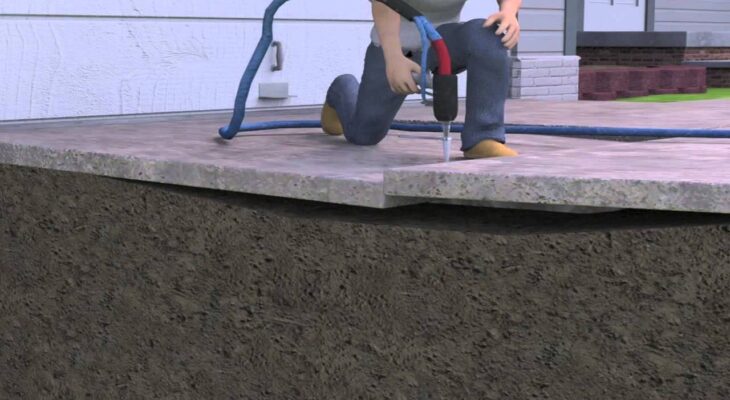The importance of concrete slabs in building cannot be overemphasized. Buildings generally require this key component to ensure the stability of structures in and around the building. Some buildings even go as far as utilizing these slabs in the foundation laying process. Structures like sidewalks, driveways, steps, patios, porches, etc are made using these cement slabs.
Polyurethane foam leveling & lifting is an effective solution for restoring the integrity of sunken or uneven concrete slabs. This method works by injecting a specialized foam mixture under the slab, which expands and fills any gaps, providing a stable foundation. The foam’s waterproof properties also prevent soil erosion and water infiltration, preserving the concrete’s integrity over time.
For all its many benefits, concrete slabs often shift, crack or sink and in the process become a hazard. People may trip as a result of the uneven slab, water may accumulate in the crevices, and water may be redirected to an undesirable location. It is necessary to ensure that these slabs are properly fixed before anyone can get hurt. For sunken concrete, slab jacking can be used to raise it and extend its overall life and ensure there is no need for replacement.
Why do concrete slabs sink?
There are several reasons why the concrete slab around your home may become sunken. The prevailing causes for this include; poorly compressed soils, change in the soil conditions, uneven distribution of weight, and erosions from downspout drains. If you do not attend to this immediately, you may end up with the more expensive alternative which is replacing the sunken concrete slab.
When you fill concrete slabs, you restore the slabs to their original state. This is done by filling the sunken part of the ground beneath it. The two main methods used in concrete lifting of the concrete include slabjacking and mud jacking. Both methods are significantly faster and cheaper than destroying the concrete slab and replacing it completely. Additionally, they could also be a less invasive alternative causing less damage to your property.
| Mudjacking (Competitors) | Slabjacking (Acculevel) | |
| Material | Concrete slurry. This is a mixture of concrete, limestone, water and sand. | Polyurethane foam |
| Drill size | 1 to 1.5 inches | ⅜ of an inch |
| Curing time | 1-2 hours, depending on the project | Less than 60 minutes |
| Durability | 5-10 years | 5 years |
| Potential issues | Can eventually decay, break apart, or sink | With significant soil erosion underneath the injected foam, it can sink |
| Warranty offered | 1-5 years | 1-5 years |
With mudjacking, water is used in the mixture; as a result, it is vulnerable to weather effects. It is not suitable to be used in areas where the air temperature is below or at freezing level because of its susceptibility to freezing. Slabjacking is a feasible option unless the ground is frozen, irrespective of the air temperature. In slabjacking, the foam comes in a liquid form so it can easily be injected through a small hose into where it is needed. Once injected, the foam sets within mere minutes.
From another side, slab replacement doesn’t address the soil voids underneath the damaged concrete. The empty pockets of air remain, so the slab is likely to settle again. During the slabjacking process, soil voids are filled. As a result, the concrete is much more stable and secure, and the repair lasts much longer.
Mudjacking also is considered as a quicker repair. Most mudjacking projects are finished in just 1-2 hours.
Mudjacking Saves Money
Looking for the most affordable way to fix your damaged concrete?
Mudjacking comes in at a fraction of the cost of slab replacement. And, due to the less expensive materials used, slabjacking also costs less than polyjacking, a similar concrete repair process.

